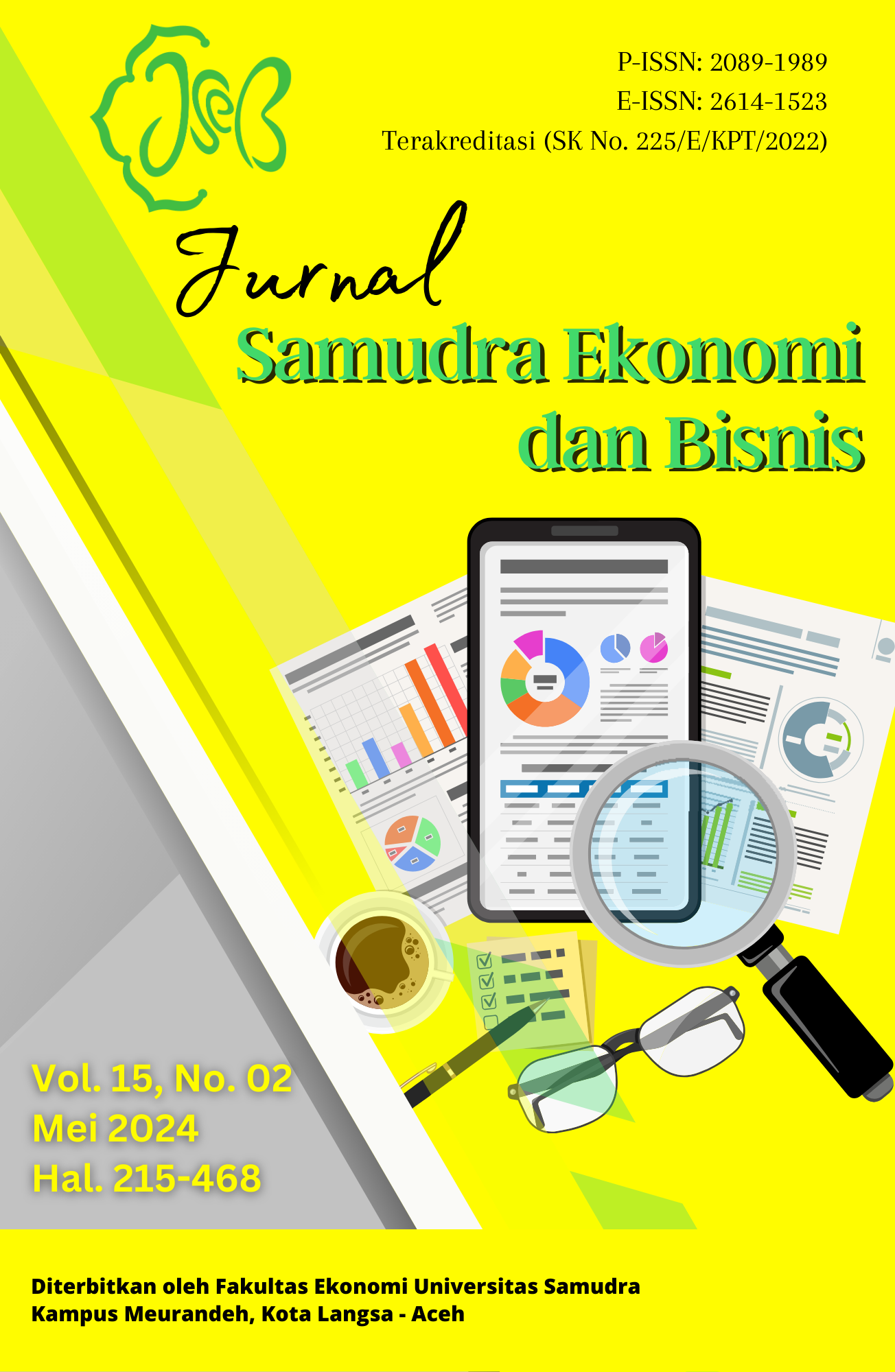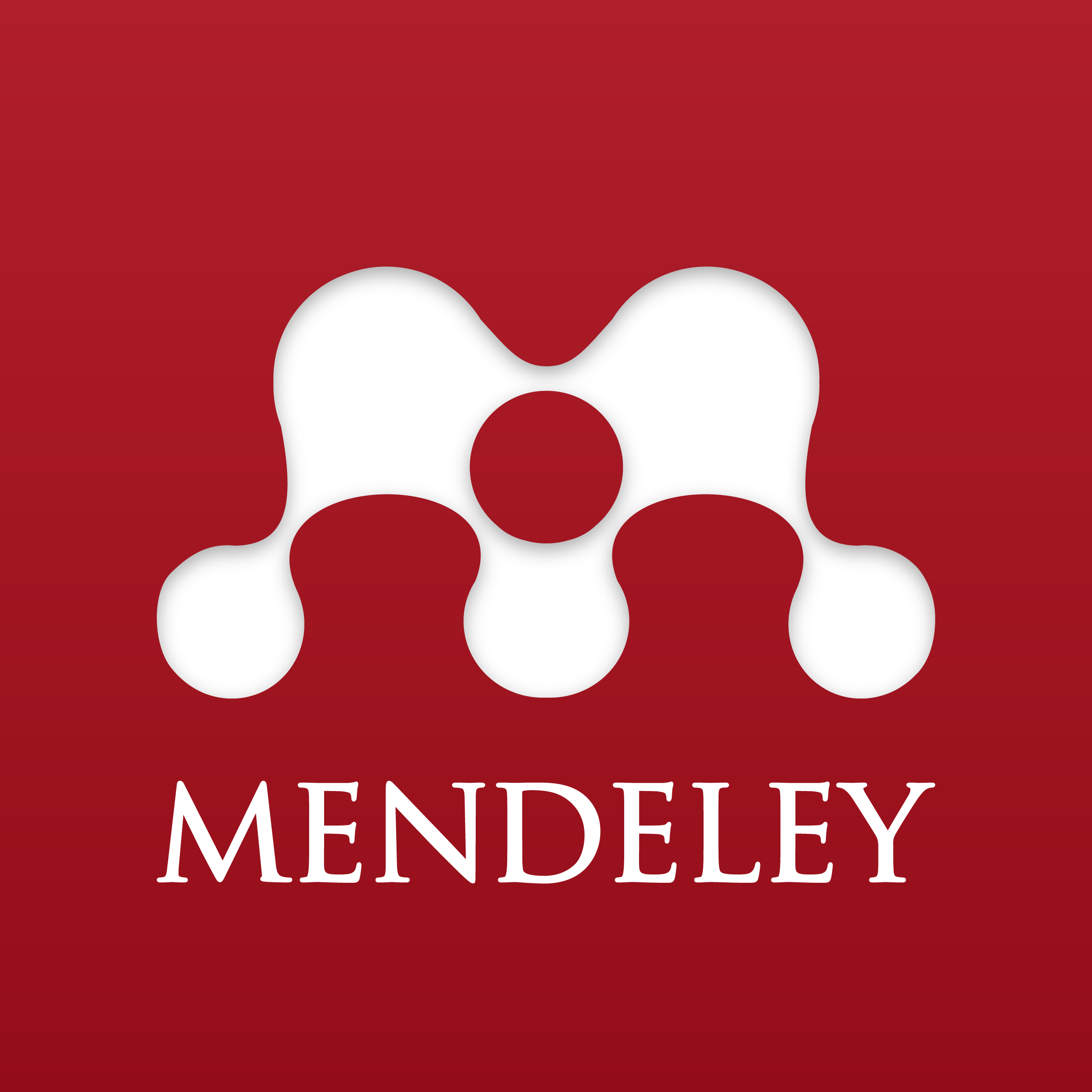Analisis Determinan Struktur Modal pada Perusahaan Property dan Real Estate
Abstract
The aim of this research is to determine the influence of asset tangibility, liquidity, non-debt tax shield, business risk, growth and firm size on the capital structure of property and real estate sector companies listed on the Indonesia Stock Exchange in 2014-2021. A dynamic panel data regression model with the Generalized Method of Moment (GMM) estimator is applied in this research. The results show that determinants simultaneously influence capital structure. Asset tangibility, growth and firm size partially have a significant effect on capital structure, while liquidity, non-debt tax shield and business risk partially have no effect on capital structure. Therefore, the formation of an optimal capital structure is expected to take into account tangible assets, growth rate and company size in order to maximize company value.
References
Alipour, M., Mohammadi, M. F. S., & Derakhshan, H. (2015). Determinants of capital structure: An empirical study of firms in Iran. International Journal of Law and Management, 57(1), 53-83. https://doi.org/10.1108/IJLMA-01-2013-0004.
Alnajjar, M. I. M. (2015). Business risk impact on capital structure: A case of Jordan industrial sector. Global Journal of Management and Business Research, 15(1), 1-7. https://globaljournals.org/GJMBR_Volume15/1-Business-Risk-Impact-on-Capital-Structure.pdf.
Arellano, M., & Bond, S. (1991). Some tests of specification for panel data: Monte carlo evidence and an application to employment equations. Review of Economic Studies, 58(2), 277–297. https://EconPapers.repec.org/RePEc:oup:restud:v:58:y:1991:i:2:p:277-297.
Bairizki, A., Agusfianto, N. P., Herawati, N., Fariantin, E., Khotmi, H., Maqsudi, A., Murjana, I. M., & Rachmawati, T. (2022). Dasar-dasar manajemen keuangan. Seval Literindo Kreasi.
Clark, T. S., & Linzer, D. A. (2015). Should I use fixed or random effects?. Political Science Research and Methods, 3(2), 399–408. https://doi.org/10.1017/psrm.2014.32.
Dara, S. R., & Mariah, M. (2018). Faktor-faktor yang mempengaruhi struktur modal pada perusahaan subsektor property dan real estate yang terdaftar di Bursa Efek Indonesia. Jurnal Riset Manajemen Dan Bisnis (JRMB) Fakultas Ekonomi UNIAT, 3(3), 423–430. https://dx.doi.org/10.36407/akurasi.v1i1.59.
Devi, N. M. N. C., Sulindawati, N. L. G. E., & Wahyuni, M. A. (2017). Pengaruh struktur aktiva, profitabilitas, ukuran perusahaan, likuiditas, dan kepemilikan manajerial terhadap struktur modal perusahaan (Studi empiris pada perusahaan manufaktur yang terdaftar di Bursa Efek Indonesia periode 2013-2015). JIMAT (Jurnal Ilmiah Mahasiswa Akuntansi) Undiksha, 7(1), 1-12. https://ejournal.undiksha.ac.id/index.php/S1ak/article/view/9585.
Fahmi, I. (2018). Pengantar manajemen keuangan. Alfabeta.
Gherghina, Ş. C., Vintilă, G., & Toader, D. A. (2020). The impact of CEO and firm-specific characteristics on capital structure: Evidence from Romanian firms. In book: Emerging Market Finance: New Challenges and Opportunities, 231-250. http://dx.doi.org/10.1108/S1569-376720200000021013.
Gusni, G. (2020). Analisis faktor penentu struktur modal: Studi empiris pada perusahaan kecil menengah di pasar modal Indonesia. Jurnal Manajemen Dan Bisnis Sriwijaya, 18(2), 83–96. https://doi.org/10.29259/jmbs.v18i2.12989.
Hang, M., Geyer-Klingeberg, J., Rathgeber, A. W., & Stöckl, S. (2018). Measurement matters - A meta-study of the determinants of corporate capital structure. The Quarterly Review of Economics and Finance, 68, 211–225. https://doi.org/10.1016/j.qref.2017.11.011.
Haron, R., Nomran, N. M., Othman, A. H. A., Husin, M. M., & Sharofiddin, A. (2021). The influence of firm, industry and concentrated ownership on dynamic capital structure decision in emerging market. Journal of Asia Business Studies, 15(5), 689-709. https://doi.org/10.1108/JABS-04-2019-0109.
Hery. (2016). Analisis laporan keuangan integrated and comprehensive edition. Grasindo.
HS, S., & Anlia, V. L. B. (2021). Kinerja keuangan perusahaan Jakarta Islamic Index di masa pandemi Covid-19. Penerbit Insania.
Hsiao, C. (2007). Panel data analysis - Advantages and challenges. TEST, 16(1), 1–22. https://doi.org/10.1007/s11749-007-0046-x.
Husnan, S., & Pudjiastuti, E. (2015). Dasar-dasar manajemen keuangan. UPP AMP YKPN.
Karkaletsis, G., & Tsimpliaridis, V. (2015). Determinants of the capital structure of SME’s in Balkans. Dissertation. https://repository.ihu.edu.gr//xmlui/handle/11544/256.
Kieso, D. E., Weygandt, J. J., & Warfield, T. D. (2017). Akuntansi keuangan menengah, Volume 1 (Edisi IFRS). Salemba Empat.
Krisnanda. P. H., & Wiksuana, I. G. B (2015). Pengaruh ukuran perusahaan, pertumbuhan penjualan, dan non-debt tax shield terhadap struktur modal pada perusahaan telekomunikasi di Bursa Efek Indonesia. E-Jurnal Manajemen Unud, 4(5), 1434-1451. https://simdos.unud.ac.id/uploads/file_penelitian_1_dir/c3a1d2642de80cc42b47470dd95aac45.pdf.
Kurniawan, A., & Kurnia, K. (2019). Pengaruh kinerja keuangan, ukuran perusahaan, dan risiko bisnis terhadap struktur modal. Jurnal Ilmu Dan Riset Akuntansi (JIRA), 8(12), 1-18. http://jurnalmahasiswa.stiesia.ac.id/index.php/jira/article/view/2726.
Kyissima, K. H., Xue, G. Z., Kossele, T. P. Y., & Abeid, A. R. (2019). Analysis of capital structure stability of listed firms in China. China Finance Review International, 10(2), 213–228. https://doi.org/10.1108/CFRI-05-2018-0044.
Mazur, K. (2007). The determinants of capital structure choice: Evidence from Polish companies. International Advances in Economic Research, 13(4), 495–514. http://dx.doi.org/10.1007/s11294-007-9114-y.
Onozare, S. U, & Eshemokhai, B. J. (2021). Determinants of capital structure in Nigerian listed manufacturing firms: A panel generalized method of moments (GMM) approach. Gusau Journal of Accounting and Finance, 2(1), 2-11. https://doi.org/10.57233/gujaf.v2i1.52.
Rani, N., Yadav, S. S., & Tripathy, N. (2019). Capital structure dynamics of Indian corporates. Journal of Advances in Management Research, 17(2), 212-225. https://doi.org/10.1108/JAMR-12-2017-0125.
Riyanto, B. (2010). Dasar-dasar Pembelajaran perusahaan. BPFE.
Septiani, S., & Lestari, D. I. (2020). Pengaruh tangible asset, profitabilitas dan risiko bisnis terhadap struktur modal. Syntax Idea, 2(12), 1131-1134. https://doi.org/10.46799/syntax-idea.v2i12.821.
Suman, S. (2015). Determinan struktur modal dan nilai perusahaan pertambangan pasca UU nomor 4 tahun 2009. EKUITAS (Jurnal Ekonomi Dan Keuangan), 19(1), 24–41. http://repository.unej.ac.id/handle/123456789/75328.
Wulandari, N. P. I., & Artini, L. G. S. (2019). Pengaruh likuiditas, non-debt tax shield, ukuran perusahaan dan pertumbuhan penjualan terhadap struktur modal. E-Jurnal Manajemen Universitas Udayana, 8(6), 3560-3589. https://doi.org/10.24843/EJMUNUD.2019.v08.i06.p10.
Zuhro, F., & Suwitho, S. (2016). Pengaruh ukuran perusahaan, pertumbuhan aset, dan profitabilitas terhadap struktur modal. Jurnal Ilmu Dan Riset Manajemen (JIRM), 5(5). 1-16. http://jurnalmahasiswa.stiesia.ac.id/index.php/jirm/article/view/671/681.
Copyright (c) 2024 Febie Tania Sihombing, Farida Titik Kristanti

This work is licensed under a Creative Commons Attribution-ShareAlike 4.0 International License.


















